|
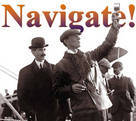
 Up
Up 
 1911-1916
1911-1916
Vertical-6 Engine 
(You are here.)



  Need
to Need
to
find your
bearings?
Try
these
navigation aids:
If
this is your first
visit, please stop by:
Something
to share?
Please:



|
|
Available in Française, Español, Português, Deutsch, Россию,
中文,
日本, and others.
 his
in-line 6-cylinder engine was the first Wright-manufactured motor to cool
the cylinders and the heads. (Previous engines cooled the cylinders
only.) Weighing 305 lb., it had 406
cubic-inch displacement and produced about 50 hp in the 1911 version. It
retained the characteristic compression release to aid starting and a foot pedal
to adjust magneto
timing as previous Wright engine designs. his
in-line 6-cylinder engine was the first Wright-manufactured motor to cool
the cylinders and the heads. (Previous engines cooled the cylinders
only.) Weighing 305 lb., it had 406
cubic-inch displacement and produced about 50 hp in the 1911 version. It
retained the characteristic compression release to aid starting and a foot pedal
to adjust magneto
timing as previous Wright engine designs.
The Wrights improved the motor in 1912 with cam-operated intake valves.
This and other small changes boosted the horsepower to 60 and earned the motor the nickname "6-60"
– six cylinders, 60 hp. Options included a muffler and dual ignition.
In 1913, the motor was equipped with dual Zenith carburetors and for
the first time a Wright motor had a throttle – the pilot could vary the
speed of the motor in flight. The Wright Company also introduced rubber
motor mounts to absorb vibration and transmit power smoothly to the chain
drive. Further improvements gradually
increased the horsepower to 70, and finally 75 hp.
Specifications:
- Cylinders: 6
- Bore: 4-3/8 in (11.1 cm)
- Stroke: 4-1/2 in (11.4 cm)
- Displacement: 406 in3 (6.7 l3)
- Horsepower: 50 to 75
- Ignition: Spark plugs powered by high-tension Mea magneto.
- Weight: 305 lbs (138.3 kg) dry
- Unique features: Compression release, fuel injection (in
early engines), twin Zenith carburetors (in later engines)
References:
- McFarland, Marvin W. (ed), "The papers of Wilbur and Orville
Wright." McGraw-Hill Book Co., New York, 1953, p 1215-1216, plate
230.
- Hobbs, Leonard S., "The Wright Brothers' Engines and Their
design." Washington, D.C.: Smithsonian Institution Press, 1971,
pp 48-56.
- Lippincott, Harvey H., "Propulsion System of the Wright
Brothers." In Wolko, Howard S. (editor), "The Wright Flyer,
an Engineering Perspective." The Smithsonian Institution Press,
1987, pp 89-91.
[Submitted by Joe W. McDaniel]
|
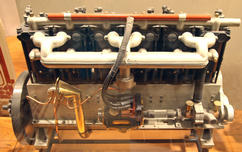
The right side of an early Wright 6-cylinder engine.
These were much more than extended versions of the 4-cylinder engine.
Introduced in 1911,they were a serious step forward in power,
reliability, and ease of operation.
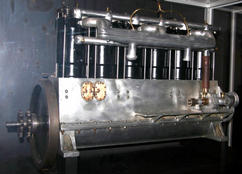
A slightly later version of the Wright 6-cylinder
engine, with ports for two carburetors.
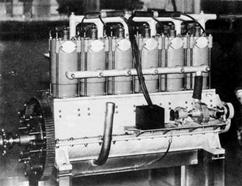
One of the options available on a Wright 6-60 was this "flexible
flywheel drive." It did the same job as today's harmonic balancers,
reducing impulse torque and engine vibration.
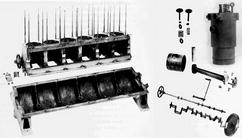
Some of the major parts of a Wright 6-60 engine. Note the engine
block has been split into two parts.
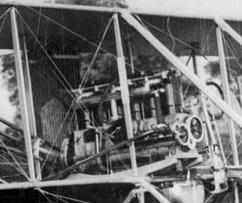
It was also standard equipment of the Wright Model D, a high-speed
"scouting" aircraft.
|
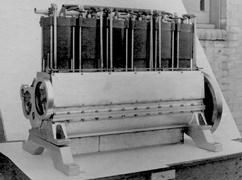
The left side of an early Wright 6-cylinder engine. Note that the
intake valves are still "automatic;" this engine was manufactured
before both sets of valves were cam-operated.
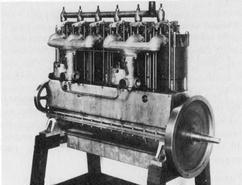
The final form of the Wright 6-60, with two linked carburetors,
exhaust ports on the far side of engine (opposite the intake ports),
and both intake and exhaust valves cam operated. In this
configuration, the engine could produce as much as 75 horsepower.
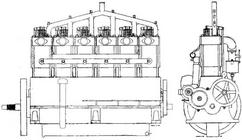
A front view and side view of the Wright 6-60 engine.
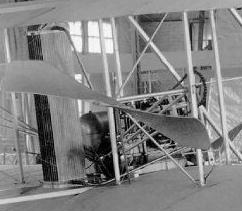
The Wright 6-60 was first offered on the Wright Model C, the
follow-on to the popular Wright Model B.
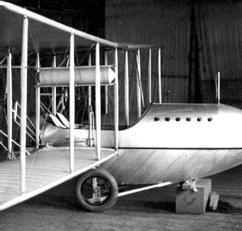
The Wright 6-60 was most effective in later Wright models, including
the F, G, and H. The Wrights placed the engine ahead of the
passengers in these aircraft and enclosed it in a fuselage. On this
Model F, only the exhaust ports are visible. This provided better
balance and aerodynamics.
|